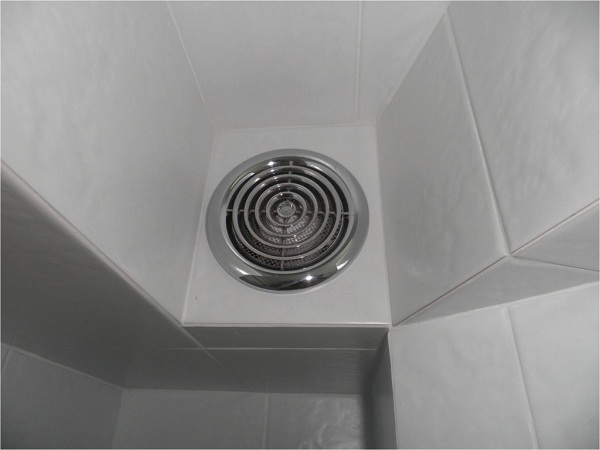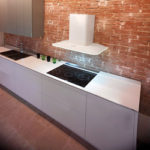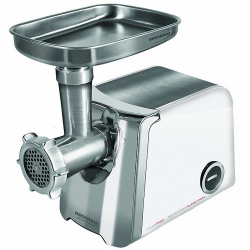Features of bathroom hoods
Not every bathroom has a window. Hence, in this room will be observed high humidity, which can lead to the formation of mold. To reduce the humidity will help exhaust for the bathroom - it is installed in a special design window.
Content
Types of ventilation for the bathroom and toilet
The circulation of air in such rooms is as follows:
- there is a natural room ventilation;
- set forced exhaust in the bathroom.
In the first case, the presence of a window or proper design is implied. air ducts. The latter should be thought out before the construction of the building. It is very important to observe the following rules for their arrangement (for example, when laying into a project in a private house):
- In each of the premises (meaning a bathroom or toilet) there must be a duct strictly vertically located at the top. You can only connect rooms with a bathroom and toilet or a kitchen and sauna, and then located on the same floor.

- Air ducts should be laid out inside with a brick or plastic pipe - this will help to strengthen the structure. It is better to avoid irregularities during installation.
- In case of turning such a channel, it must be made smooth with a radius of at least 10 cm.
- Ideally install the exhaust system on the wall opposite the door.
Forced exhaustinstalled in the bathroom and toilet, used under such conditions:
- stagnation of air in the room or its difficulties;
- breakdown in the natural ventilation system;
- planning the installation of an electric sauna or steam generator;
- in wooden cottages.
Check whether you need such a hood is very simple. To do this, simply light a candle and bring it to the hole for ventilation. If the flame has deviated by about 45 degrees, then the bathroom is ventilated properly. But if the flame does not move at all (or deviates, but much less), then in this case an exhaust hood is urgently needed in the bathroom.
Not always bad air circulation is caused by clogged channels: sometimes it occurs when replacing wooden windows with plastic ones. Therefore, it is best to choose the latter with ventilators specially built into them.
Varieties of exhaust fans
Forced air circulation is carried out by mechanical devices. Most often they are represented exactly fansthat can only be chosen correctly. The advantage of such a device is that its work does not depend on weather conditions and will always provide the chosen mode of ventilation. There are drawbacks - such equipment is still electric, and wires must be connected to it.
There are two types of these devices: simple and automatic. The difference between them is that automatic ones require minimal user participation in their work.
- Simple extractor hood It is a standard axial mechanism in a tubular body. It is equipped with a check valve that blocks the return flow of exhaust air. The system is often turned on and off by means of a switch in the bathroom, sometimes for it install an additional power button.In the fight against large volumes of steam such a fan is ineffective.
- Automatic exhaust fan It is more expensive, but it does its job perfectly. It has a special timer off, as well as a hydrostat, which independently determines the level of humidity in the bathroom. As soon as the humidity exceeds the norm, the device turns on, and when it completes the work, it also switches itself off. That is, human participation in his work is minimized, which is very convenient.

Which exhaust fan to choose
The presented range of such devices on the market is quite diverse, but the essence of all of them is the same: the hood is a structure within which is located electric fan. That he will drive the air through the pipeline system. The technical parameters of such a device are also important:
- Productivity within 60–250 air cubic meters. This unit of measure must be at least six times the volume of the room. For example, if the bathroom has 10 m3, then the indicator should be equal to 60 m3 / hour.
- It is possible to calculate what kind of exhaust hood is necessary for a bathroom and a toilet using the formula M = V * (5 ... 10), where M is the required capacity,V is the volume of the room in cubic meters and (5 ... 10) is the coefficient of room attendance (if a person lives in the house alone, then it is equal to 5, in the case when there are several people - put the number 10).
- Another important point: a small gap should remain under the door, only this way air will flow. Otherwise all the work on circulation will be without result.

The general requirements for devices include the following:
- When installing into an existing channel, it is important to choose such models that will fit fit and size holes. If the device is chosen correctly, it will go there completely, and only the grill will remain outside.
- Applied on the product may have some help marking - these symbols will show moisture protection (the higher the number, the better it will be). For a bathroom, it is better to go from models with IP 45. In this case, the equipment will be protected from water jets.
- The problem is urgent noise, which produces a fan (for example, if it is more than 35 decibels, this will already annoy). Low-noise models are represented by fans with a large diameter of the blades and a small speed of their work (it will make less noise,than so small with the same performance). To reduce discomfort, some manufacturers install a silencer in the technique.
- In modern models installed motion sensorsthat turn on the device only if someone came in. At the same time with the device turns on and lighting.
- There are options with timers - they will limit the operation time of the device. At the same time, they may allow the hood to work for a certain time after switching off.
- There are sentences with humidity sensorswhich will determine how much excess steam is in the air and will turn on the device only when necessary.
- Bathroom hood with check valve prevent air from entering the room from the street or other rooms. This will happen even when the fan is off. If the channel goes to several rooms, then such a device will be simply indispensable.
There is a separate subgroup ceiling hoods. Already by the name it is clear where they are mounted, but the way they work is interesting: such devices draw in air and simply cool the temperature in the room. Such an action can almost instantly eliminate condensate.

Ceiling hood scheme
How to install the hood
Hood assembly in the toilet or bathroom can be done independently. To do this, follow these rules:
- In the walls of the paths laid in advance under the wiring. In the open form it is forbidden to do it!
- The device may have separate switch or combined with lighting. The scheme of its connection must be thought out in advance: it is for it that the wiring should be coordinated.
- It is also necessary to connect the phase according to the rules: the switch is placed on the phase (but not zero). If there is no special knowledge, it is best to entrust the work to a professional electrician.
- The rest of the installation will be to insert the device into an existing vent hole. Attaching it to the wall is best with screws. If the hole is not wide enough, then it needs to be expanded with the help of the grinder.

- In the event that the need install hood appeared after the repair, then drilling is optional - just stick the technique with “liquid nails” or silicone sealant. Clay drips into place holes designed for screws. Excess can simply be cut with a knife after they are frozen.By the way, it is the sealant layer that can become an excellent noise absorber.
- Connect the hood It should be in accordance with the attached scheme instructions.
After installation, it will be necessary to remove and wash the grill from time to time. It must be done: it will be clogged with dust.
So, the problem of airing the room is solved by simply installing the hood. This measure will protect the room from the occurrence of fungi and other harmful microorganisms.

/rating_off.png)












